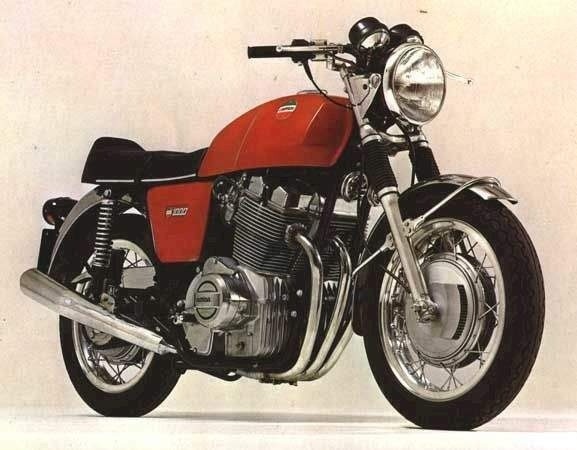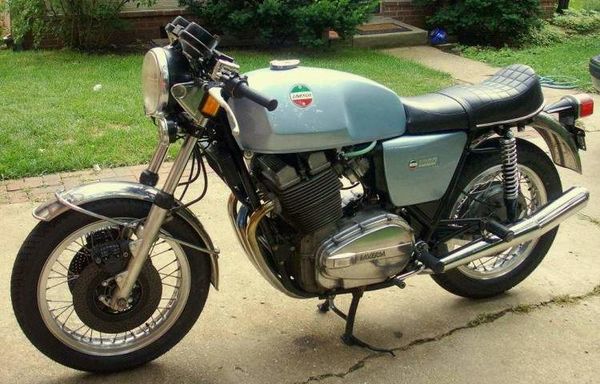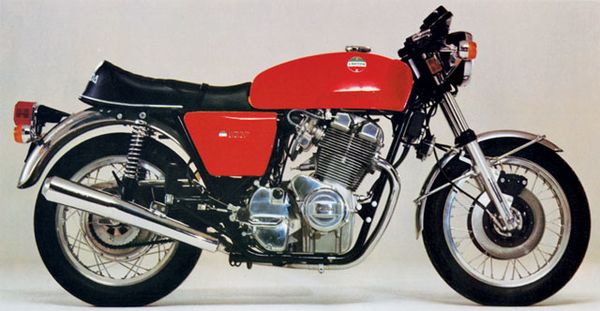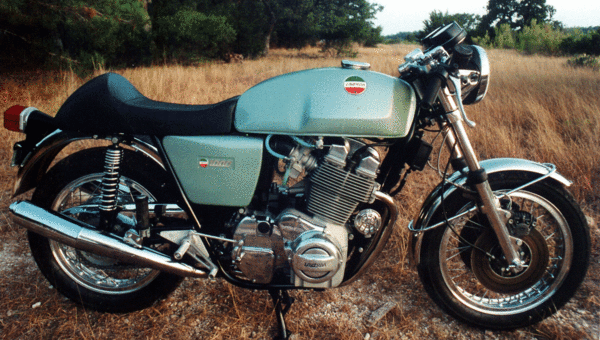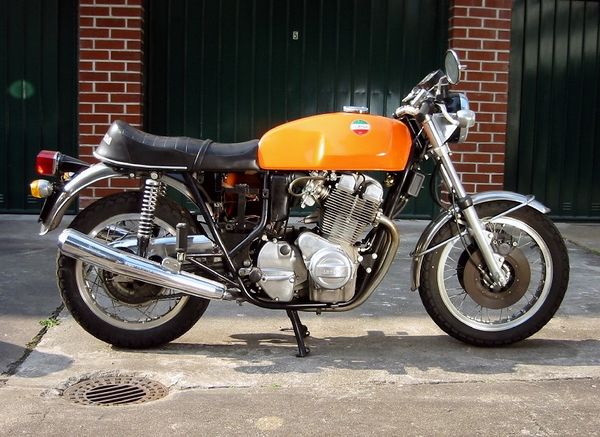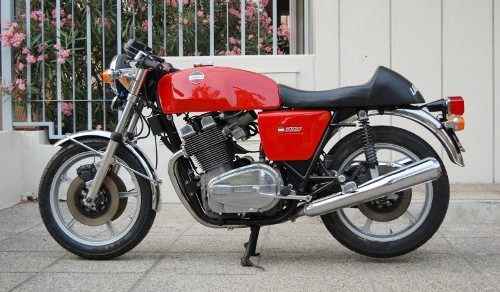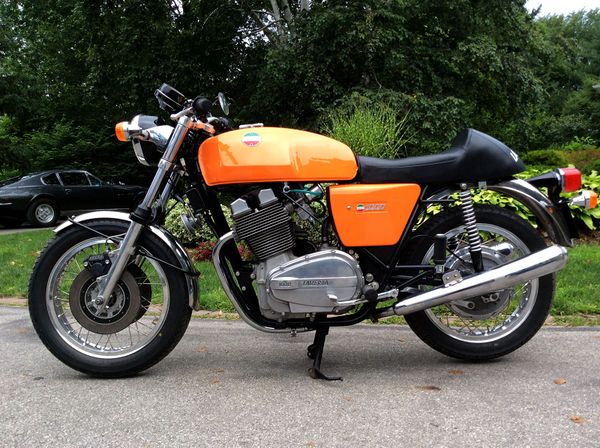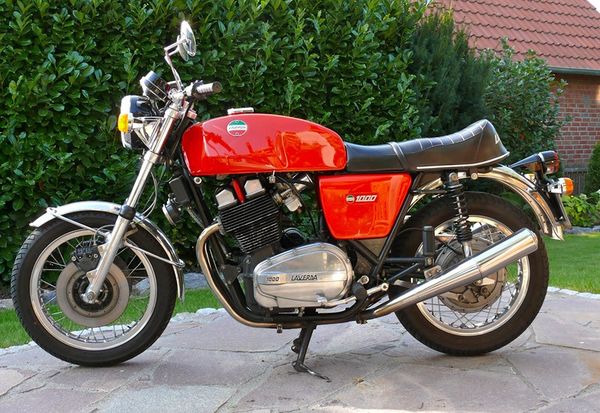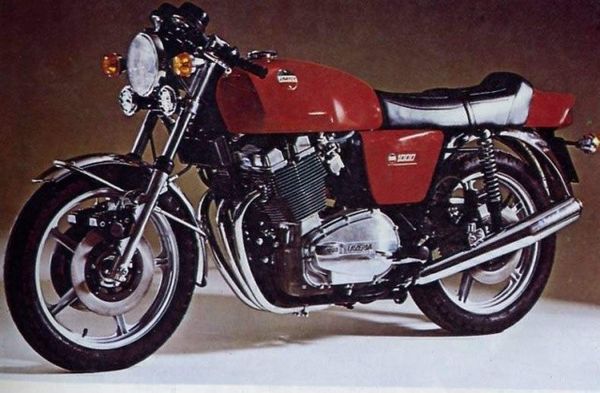Difference between revisions of "Laverda 1000 3C"
(template fixes) |
(has images) |
||
| Line 94: | Line 94: | ||
[[Category:Laverda motorcycles]] | [[Category:Laverda motorcycles]] | ||
[[Category:1970s motorcycles]] | [[Category:1970s motorcycles]] | ||
Revision as of 02:41, 19 November 2019
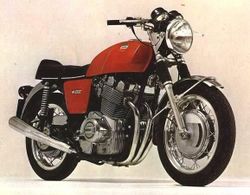 |
|
| 'Laverda 1000 3C' | |
| Manufacturer | [[Laverda]] |
|---|---|
| Production | 1974 - 1977 |
| Class | [[:Category:Naked motorcycles|Naked]] [[Category:Naked motorcycles]] |
| Engine | air cooled, four stroke, transverse three cylinder, DOHC, 2 valve per cylinder |
| Bore / Stroke | 76.2mm x 76.2mm |
| Compression ratio | 9.0:1 |
| Horsepower | 80.06 HP (59.7 KW) @ 7250RPM |
| Torque | 62.7 ft/lbs (85.0 Nm) @ 5000RPM |
| Fuel System | 3x 32mm DellOrto PHF carburetors |
| Transmission | Gear box: gears Final Drive: chain |
| Suspension | Front: telescopic fork Rear: swinging arm, dual shocks |
| Brakes | Front: dual 280 mm discs with 2-piston calipers Rear: single 280 mm disc with 1-piston calipers |
| Front Tire | 3.25 H19 |
| Rear Tire | 4.00 H18 |
| Weight | 214.0 kg (wet) |
| Manuals | Service Manual |
The Laverda 1000 3C was a air cooled, four stroke, transverse three cylinder, DOHC, 2 valve per cylinder Naked motorcycle produced by Laverda between 1974 and 1977. Max torque was 62.7 ft/lbs (85.0 Nm) @ 5000 RPM. Claimed horsepower was 80.06 HP (59.7 KW) @ 7250 RPM.
Engine
A 76.2mm bore x 76.2mm stroke result in a displacement of just 981.0 cubic centimeters.
Drive
The bike has a gears transmission.
Chassis
It came with a 3.25 H19 front tire and a 4.00 H18 rear tire. Stopping was achieved via dual 280 mm discs with 2-piston calipers in the front and a single 280 mm disc with 1-piston calipers in the rear. The front suspension was a telescopic fork while the rear was equipped with a swinging arm, dual shocks.
1974 Laverda 1000 3C
The 1974 MY Laverad 1000 3C sports an air-cooled, four-stroke, 981cc, transverse three cylinder engine mated to a five-speed manual transmission and can reach a claimed power output of 80 horsepower and 86 Nm of torque. Standard features include telescopic forks in the front and a rear swinging fork with adjustable dual shocks, which not only make for a more comfortable machine, but also improve its cornering abilities. It also comes with a drum braking system, and it tips the scale at 214 kg.
1975 Laverda 1000 3C
The 1975 MY Laverda 1000 3C sports an air-cooled, four-stroke, 981cc, in-line three cylinder powerhouse paired to a five-speed manual transmission, and can produce 80 horsepower and 86 Nm of torque. This powerful naked machine also boasts dual front disc brakes and a single rear disc brake, which helps keep that awe-inspiring power in check. Other features include a front telescopic fork and a rear swinging fork as a suspension system, a 20 liter fuel tank and a Bosch electronic ignition system.
1976 Laverda 1000 3C
The 1976 MY Laverda 1000 3C is one of the most powerful machines produced by the Italian brand up to date, thanks to its air-cooled, four-stroke, 981cc, in-line three cylinder engine paired to a five-speed manual transmission, that can produce a claimed 80 horsepower and 86 Nm of torque. Also, it has a high-end braking system, composed of dual 280 mm discs in the front and a single 280 mm disc in the rear.
1977 Laverda 1000 3C
The 1977 MY Laverda 1000 3C sports an air-cooled, four-stroke, 981cc, transverse three cylinder engine mated to a five-speed manual transmission, and can produce 80 horsepower and 86 Nm of torque. It has a minimalist approach to its design, reminding more of the 60's cafe racers, with narrow fenders, and five-spoked, cast-aluminum wheels, as well as a high-end suspension package, a telescopic fork in the front and dual adjustable shocks in the rear. In addition, a race-derived braking system, composed of dual 280 mm discs in the front and a single 280 mm disc in the rear, which increase its performance, as well as makes for one of the safest Laverda's designed up to date.
